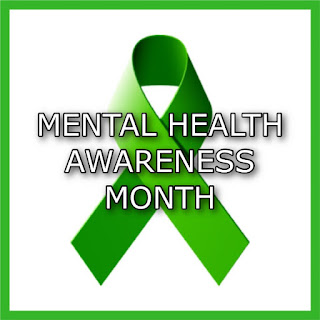
Mania (or being manic) is the opposite of depression in the up-and-down swings of bipolar disorder. It’s also the other half of the no-longer-used term manic depression, which was changed to bipolar disorder in the 1980 third edition of the Diagnostic and Statistical Manual of Mental Disorders (or DSM) in the interest of reducing stigmas related to the words manic and depression.
Bipolar disorder is subdivided into bipolar I (which has more extreme swings in each direction) and bipolar II (which manifests with lower levels of mania—clinically called hypomania—and deeper depressions). I’m bipolar II.
Like depression, mania can manifest itself over different lengths of time in any number or combination of symptoms, including these:
Like depression, mania can manifest itself over different lengths of time in any number or combination of symptoms, including these:
- High, uncontrollable energy
- Extreme, rapid talkativeness
- Racing thoughts or flights of ideas
- Feelings of elation or euphoria
- Feelings of irritation or agitation
- High distractibility and inability to focus
- Decreased need for sleep while still feeling rested
- Inflated self-esteem or grandiosity
- Feeling full of great new ideas, important plans or exciting activities
- Involvement in risky activities—like extravagant shopping, improbable commercial schemes, recreational drugs, hypersexuality—with a high likelihood of negative consequences
Some bipolar people claim they like or actually love their manic episodes. I can understand that sentiment from the perspective of having a little more energy or euphoria, but I find that anything more than that can be terrifying. And exhausting.
It’s terrifying because I know from experience I’m prone to do impulsive things with no consequences alarms going off in my head. After more than a decade on the bipolar coaster, I’m finally self-aware enough that I know I’m doing (or at least reminding myself not to do) those impulsive things and I need to summon the alarms myself because they won’t go off on their own. Thankfully my impulsive behaviors tend to be rather benign and fixable, like buying shoes and clothing online. But there’s always the possibility I might escalate, and who knows what my impulsive brain could be capable of.
It’s also terrifying because my manic episodes often plummet directly into the deepest of my depressive episodes. Again: I’m finally self-aware enough to know that the depressive episodes are coming and I can do what little I’m able to do to prepare for them, like canceling plans and setting out Tylenol PM to help me hopefully sleep through the worst of them.
Everyone experiences mania and depression differently—to different degrees, for different lengths of time, at different intervals and even in different environmental conditions. Neither is better or easier than the other, and both in their own way can control or disrupt your life.
You’ll probably never encounter me in a depressive state because I become immediately reclusive. But if I’m talking rapidly and visibly distracted by everything and more jittery than normal, please do your best to keep me away from the Nordstrom website.





